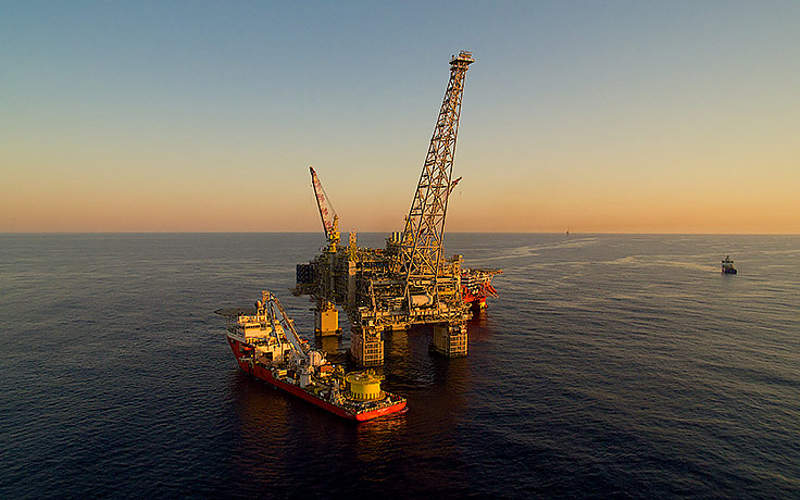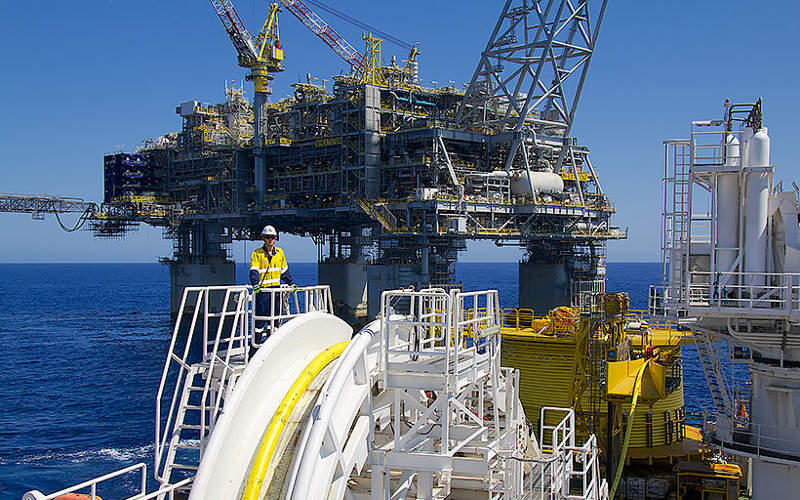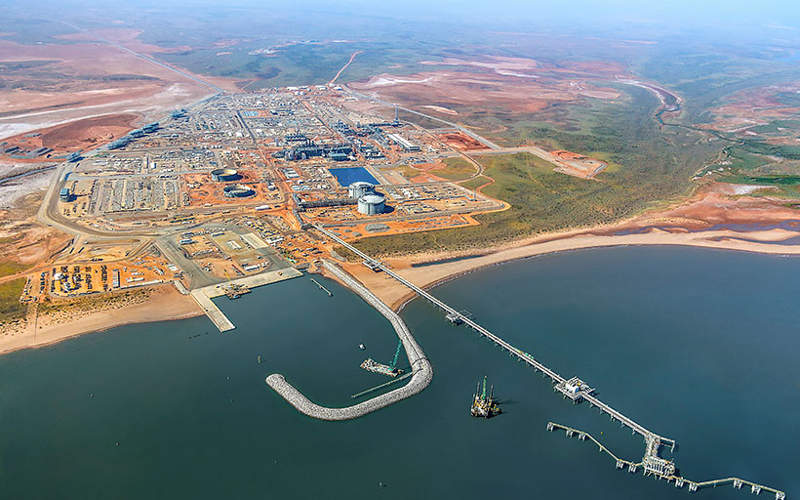The Wheatstone Project is a gas to LNG project that involves the development of the Wheatstone and Iago fields located offshore Western Australia in the Northern Carnarvon Basin. The fields are located in the exploration permits WA-253-P, WA-17-R, and WA-16-R, approximately 100km north of Barrow Island and 225km north of Onslow.
The project is being developed by a joint venture between Chevron (64.4%) for Kuwait Foreign Petroleum Exploration Company (13.4%), Woodside Petroleum (13%), Kyushu Electric Power Company (1.46%) and PE Wheatstone part-owned by TEPCO (8%).
A significant percentage (80%) of the project’s foundation capacity will receive natural gas from the Chevron-operated Wheatstone and Iago fields, while the remaining 20% will be supplied from the Julimar and Brunello fields that are being developed separately by Apache and Kuwait Foreign Petroleum Exploration Company.
The final investment decision on the $29bn project was taken in September 2011, construction started in December 2011 and first gas production is expected in mid-2017.
Wheatstone project development details
The Wheatstone and Iago fields will be developed as a subsea tieback to a production platform that will be connected to the onshore LNG facility via a single export line.
The field development will comprise three production flowlines that will tie six drill centres back to the platform. A total of 23 production wells will be drilled. The Wheatstone field consists of four-manifolds with a capacity of 20 wells, of which 15 are production wells and the rest spare wells. The Iago field comprises two manifolds with a 12-well capacity of which eight are production wells.
The two fields will be developed through four drilling campaigns over a period of 15 years. The first phase of drilling will include nine wells being drilled from three subsea manifolds.
Wheatstone project’s offshore infrastructure will include well infrastructure and subsea installations, a gas processing platform and a trunkline to transport gas from the platform to the onshore facilities.
Wheatstone project platform details
The offshore processing platform will be located in 73m of water and approximately 225km from the coast. It will receive gas and condensate from the Wheatstone, Iago, Julimar and Brunello fields, which will be dehydrated, compressed and transferred via a 225km subsea trunkline to the onshore gas plant.
Billed as Australia’s biggest offshore facility, the platform’s topsides weigh approximately 36,000t. A barge will be used to transport the topsides from South Korea and install them on the substructure through floatover procedure.
The platform topsides are designed to have a total deck area of 20,000m², which includes primary processing equipment and facilities.
Subsea system and export trunkline
Subsea manifolds of the two gas fields will be located at depths ranging between 100m and 260m with subsea trees clustered around them. The development wells will be drilled from the subsea trees to a depth of 3km.
Heavy-lift vessels and drilling rigs will be used to install the manifolds and subsea trees respectively. The wells will be tied back to the processing platform using a network of corrosion-resistant subsea pipelines that will be installed by pipe-laying vessels.
The 225km-long trunkline will have a diameter of 1,120mm and will be the biggest diameter gas pipeline in Australia. Weighing approximately 200,000t, the trunkline will cross the shore using a micro-tunnelling technique to reduce the impact on the environment.
Onshore infrastructure details
The project will consist of a gas plant located 12km west of Onslow in Western Australia at Ashburton North Strategic Industrial Area. It will include two LNG trains with a combined capacity of 8.9 million tonnes per annum (Mtpa).
The onshore gas plant will process gas produced from the offshore development and will have a capacity of 200TJ a day.
Sale of LNG from the project
Chevron and its partners Woodside Energy and Kuwait Foreign Petroleum Exploration Company have entered into sales and purchase agreements with a number of LNG buyers for supplying the LNG produced from the Wheatstone project. A major part of the LNG produced (approximately 85%) has already been committed to premier buyers.
Other agreements include 3.1Mtpa to Tokyo Electric Power Company, 0.7Mtpa to Kyushu Electric, 1Mtpa to Chubu Electric and 0.9Mtpa to Tohoku Electric. Tokyo Electric Power Company signed an additional agreement with Chevron for 0.4Mtpa LNG from the project.
Contractors involved
Daewoo Shipyard and Marine Engineering were contracted by Chevron for the engineering, fabrication and installation of the platform.
Technip was awarded a €245m ($269.7m) project in 2012 for project management, design, fabrication and installation of subsea isolation valve, production tee protection structures, spools and jumpers. The scope of work also included transport and installation of manifold, foundation structures and pipeline termination structures, and supply and installation of 41km of umbilicals.
A separate FEED contract was awarded to Technip in 2009 that also involved concept selection studies. INTECSEA also performed pre-FEED engineering in 2008 followed by FEED engineering in 2010 and post-FEED engineering in 2011.
Clough was awarded a A$350m ($251.4m) contract in 2012 for offshore hook-up and commissioning work on the project. FMC Technologies entered an agreement with Chevron in 2011 for $325m to provide 11 subsea production trees, 11 wellheads, three-manifolds, well access systems, and subsea and topside controls.
Technip sub-contracted Jumbo for the installation of the subsea structures comprising pipeline termination structures, subsea isolation valve (SSIV) structures, tee protection structures and drill centre manifolds.










